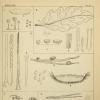
15-12-2025 12:34
 Danny Newman
Danny Newman
indet. Rhytismataceae on oak leafnear Purchase Roa

15-12-2025 11:49
 Danny Newman
Danny Newman
ITS sequences from the following two collections B

15-12-2025 07:09
 Danny Newman
Danny Newman
indet. Rutstroemiaceae sp. on unk. fallen leavesMc

15-12-2025 07:05
 Danny Newman
Danny Newman
Pseudosclerococcum golindoi (det: Zotto)near Cosb

09-12-2025 12:06
 Andgelo Mombert
Andgelo Mombert
Bonjour,Je recherche l'article concernant Hypobryo

12-12-2025 18:39
Mirek GrycHello everyone.Macrofeatures similar to Mollisia b

07-12-2025 16:07
Arnold BüschlenHallo, ich habe in einer Moos-Aufsammlung (epiphy

08-12-2025 21:04
Mark Stevens"Hello everyone,I'm relatively new to microscopy (
Diaporthe samaricola - Spore Sizes & Appearance.
Peter Thompson,
14-09-2012 13:49
I wonder if anyone has illustrations and measurements of the ascospores of Diaporthe samaricola, which grows on the seed cases of Fraxinus excelsior.
There does not seem to be any information in the literature available to me.
Thanking you in anticipation,
Peter.
Christian Lechat,
14-09-2012 14:07

Re : Diaporthe samaricola - Spore Sizes & Appearance.
Description here:
http://www.librifungorum.org/Image.asp?ItemID=157&ImageFileName=027/0126b.jpg
Cordially,
Christian
http://www.librifungorum.org/Image.asp?ItemID=157&ImageFileName=027/0126b.jpg
Cordially,
Christian
Alessio Pierotti,
14-09-2012 15:31

Re : Diaporthe samaricola - Spore Sizes & Appearance.
The name Diaporthe samaricola was proposed by W. Phillips & Plowright in 1876 with the following diagnosis: "Perithceia minute, immersed, covered by a circumscribed thin black stroma, variable in size and outline; ostiola minute, prominent; sporidia biseriate, colourless, quadrinucleate, somewhat acuminate, .0007 in. x .002 in.; asci .003 x .0004 in. On the samari of ash, Terrington, Jan. 1875. Plate 42, fig. 6. a. ascus; b. sporidia" [Grevillea 3 (27): 126. 1875].
Lewis Wehmeyer in his monograph of the genus published in 1933 writes of this species on pages 77 and 78 (see attachment: EXTRACT etc.; see also the attachment: 1932-v17-237-0001).
Lewis Wehmeyer in his monograph of the genus published in 1933 writes of this species on pages 77 and 78 (see attachment: EXTRACT etc.; see also the attachment: 1932-v17-237-0001).

 Extract_from_Wehmeyer_1933_(pp._77_78)
Extract_from_Wehmeyer_1933_(pp._77_78)